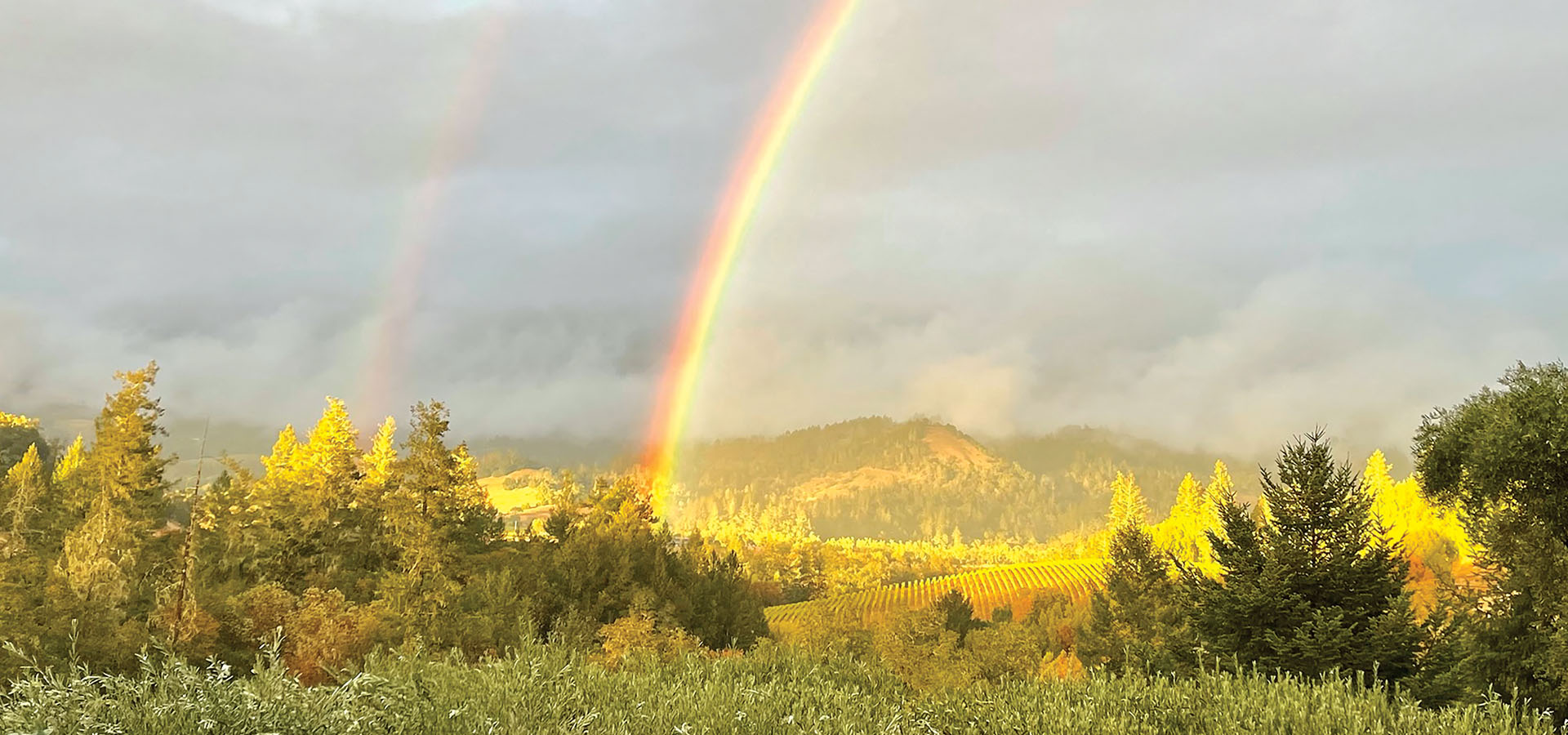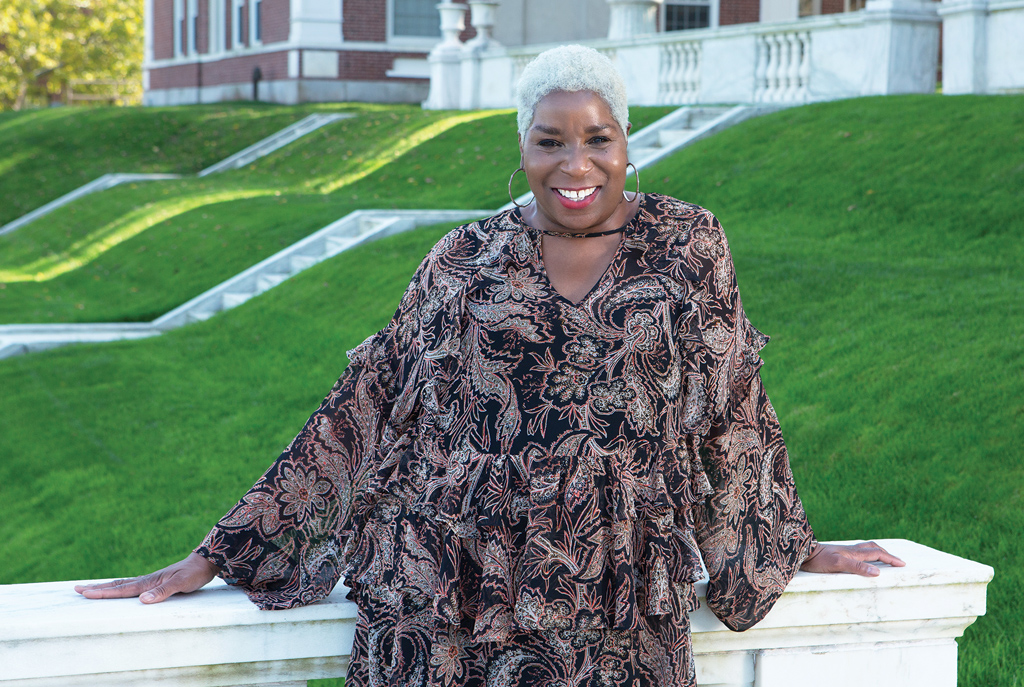Persistence Pays Off
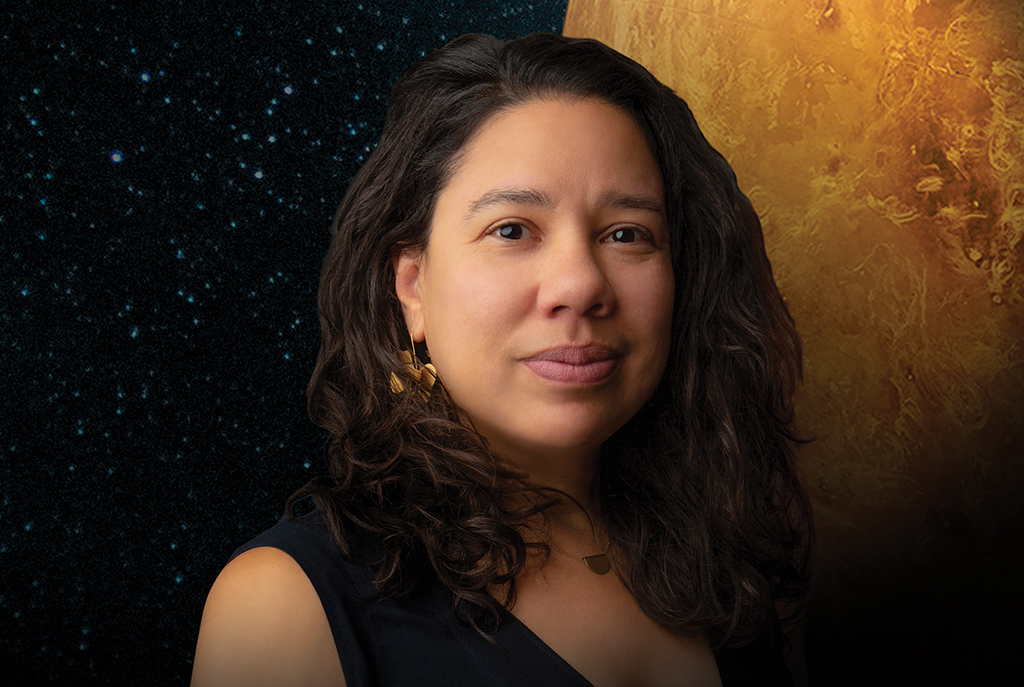
With a lifelong love of planetary science, Professor Martha “Marty” Gilmore blazes new paths for Venus exploration.
By Katie Aberbach
Martha “Marty” Gilmore, the George I. Seney Professor of Geology in the Department of Earth and Environmental Sciences, last spring received news she’s waited her entire career for: NASA selected two Venus missions that she co-developed.
“Many missions go through the proposal process and never get selected, so it’s a big, big deal,” she says. Over the past 10 years the complementary pair of missions had twice proposed to the NASA Discovery Program but lost out to other projects, including explorations of asteroids. With the selection of both at the same time, Gilmore was relieved—and “just so happy.”
Known as DAVINCI (Deep Atmosphere Venus Investigation of Noble gases, Chemistry, and Imaging) and VERITAS (Venus Emissivity, Radio Science, InSAR, Topography, and Spectroscopy), the two missions will explore Venus’s atmosphere and surface. They are expected to launch in 2028 to 2030.
Gilmore, a planetary geologist who, for countless Wesleyan students, has shined a light on the mysteries of rocks on Earth, Mars, and Venus, can hardly wait for the missions to launch. Not to mention the new scholarship that will result.
“I’m lucky to be at this point in my career where I’ll have 20 years to enjoy the data,” she says, a smile spreading across her face during a Zoom interview in the middle of her fall sabbatical. “It’s going to rewrite our understanding of Venus. It’s going to revolutionize the way we think about planets. I can’t wait to see all the ways in which we’re wrong.”
An Eye on Venus
From the very start of her academic career, Gilmore has been fascinated by Venus. The last time a U.S.-led mission visited Venus was in 1989, when the spacecraft Magellan mapped the planet’s surface. Gilmore was a doctoral student at Brown then, and focused her dissertation on data from Magellan.
Decades later, however, “the science of Venus has stagnated; we’ve reached the point where you can’t progress beyond what we know without more data,” she says. Over the years, her own research has taken new directions as well, with explorations of Mars’s surface as well as the geology of Long Island Sound. But returning her primary focus to Venus—just when the global scientific community starts to pay attention as well (thanks also to European scientists’ EnVision mission to Venus, launching in the early 2030s)—has her gleeful.
“I’m really excited because when you have a mission, that begets more science, more participation,” she says. “I think now we’ll start to see a new generation of students come into Venus work, which is awesome.”
Critical Questions
As climate change has become impossible to ignore, Venus research is incredibly relevant. The planet “is the poster child for a runaway greenhouse CO2 atmosphere,” Gilmore says. Despite their differences today, Venus and Earth formed at the same time and are roughly the same size. One became our habitable planet, containing oceans—while the other turned into Venus, commonly described as “hellish” due to its extreme surface heat.
“Why is that?” Gilmore asks. “And what can we learn from looking at other Earth-sized planets in the galaxy: Are they Earths? Are they Venuses? Are they something else? This is so critical because ultimately we want to be able to recognize habitable worlds.”
The DAVINCI mission, managed by NASA’s Goddard Space Center, will send an atmospheric probe to take measurements of Venus’s thick atmosphere, a process that could reveal whether the planet ever had an ocean. VERITAS, managed by NASA’s Jet Propulsion Laboratory, will send an orbiter to map Venus’s surface, creating the first-ever high-resolution images of its “tesserae,” which could be similar to Earth’s continents. Using infrared emissions from Venus’s surface, VERITAS will also shed light on the planet’s surface composition—a source of major curiosity for Gilmore, whose expertise is Venus’s oldest rocks.
“I’m so excited to know the answers to these questions—I mean, what are these rocks?” Gilmore says. “I can’t wait to learn what the rocks are.”
“Infectious” Passion
By multiple accounts, Gilmore makes a surprisingly strong impression when students first encounter her passion for, well, rocks.
“Her enthusiasm for science is infectious,” says Emmy Hughes, ’20, an Earth and environmental sciences major for whom Gilmore served as a thesis advisor. Hughes is currently pursuing a PhD in Martian geology at Georgia Institute of Technology, a path she credits to Gilmore’s mentorship. “There’s literally no way I would do anything near what I’m doing if I hadn’t met her.”
Terra Ganey ’21, another of Gilmore’s thesis advisees, now pursuing a PhD in Earth and planetary sciences at the University of California Santa Cruz, echoes that notion. “Her enthusiasm for Venus got me excited about it,” she says. For her thesis, Ganey focused on reconstructing Venus’s sediment history, an area that has been generally overlooked by other scholars. She and Gilmore are preparing a paper based on a section of Ganey’s thesis.
“As a scientist, she’s a fantastic role model,” Ganey says. “It was a transformative experience to have a strong woman scientist as a mentor. That was something I’d never had before, and it made me realize how important it is for young women scientists to have role models like Marty who are making big waves in their communities.”
Recalling her own experiences as a young Black female scientist at the start of her career, Gilmore shares a similar sentiment.
“It’s critically important that there are people who look like you in your field. It sounds simplistic, but it matters,” she says. When she was a graduate student, Gilmore says, nearly all the professors were white males. There were just three female faculty members, none of whom had children. (Today, a section of Gilmore’s CV flies in the face of that fact, proudly proclaiming, “Children Produced: Two beautiful boys, born 2007 and 2011.”)
Gilmore is particularly conscious of the need to welcome more people into her field from backgrounds not traditionally represented in laboratories or lecture halls. In classes, she provides only examples featuring female scientists, and makes herself available as an ally for students of color. In 2020, she was recognized with the Randolph W. “Bill” and Cecile T. Bromery Award from the Geological Society of America, where she is a fellow, for making “significant contributions to research in the geological sciences” and being “instrumental in opening the geoscience field to other minorities.”
An Ideal Environment
Given the time-consuming, intellectually demanding work of developing planetary research plans, most NASA mission teams are made up of scientists and scholars from research-focused institutions. As Phillip Resor, professor of Earth and environmental sciences, says, “mission science is uncommon at liberal arts institutions,” where emphasis is placed on both research and teaching.
But it’s also not surprising that Gilmore has seen such success on the NASA teams, he says. “Working with Marty is a pleasure, and she’s persisted in her work on Venus—even when she’s done other things along the way, she’s always kept active with the Venus community.”
In other words, Gilmore brings an uncommon perspective to her teams—and that’s the way she likes it.
“I’ve never wanted to be at a huge institution,” says Gilmore, who over the course of her 21 years at Wesleyan has been instrumental in the development of the University’s nationally recognized planetary science program (see Milestones). “And at Wesleyan I’ve been able to work in an environment where I can do the highest level of research as well as teaching—Wesleyan is unusual in that it allows for research at this level even though it is not a huge institution. I’m so happy to be able to show that you can have this kind of job and still do this level of research, and to show what a special place Wesleyan is. I’m just loving that.”
* * *
MILESTONES
 1978 – At age six, during a visit with her parents to the State Museum of Pennsylvania in Harrisburg, Gilmore is enamored of the geology exhibits and planetarium, cementing an early love of science and planetary geology.
1978 – At age six, during a visit with her parents to the State Museum of Pennsylvania in Harrisburg, Gilmore is enamored of the geology exhibits and planetarium, cementing an early love of science and planetary geology.
1997 – Gilmore earns her doctorate from Brown University at age 24. Writing her dissertation during a time when NASA deployed the Magellan mission to Venus, Gilmore focuses her own research on that planet.
1998–2000 – Gilmore works as a postdoctoral researcher at NASA’s Jet Propulsion Laboratory.
2000 – Gilmore joins Wesleyan’s Department of Earth and Environmental Sciences as an assistant professor. She and Bill Herbst, currently the John Monroe Van Vleck Professor of Astronomy, Emeritus, play a major role in the development of Wesleyan’s Planetary Science Group.
2006 – Gilmore becomes Wesleyan’s campus director for the NASA Connecticut Space Grant College Consortium, a position she holds for seven years.
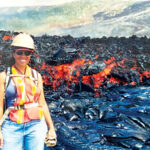
2008 – Gilmore plays a leading role in the development of Wesleyan’s planetary science course cluster. This paves the way for the creation of an MA concentration in planetary science in 2013 and a planetary science minor in 2014. Today the planetary science group includes six primary faculty and five affiliated faculty across five departments, and has produced 87 BA, MA, and PhD graduates, putting Wesleyan on the map of top planetary science graduate programs in the United States.
2014 – Gilmore is promoted to professor and appointed the George I. Seney Professor of Geology.
2017 – Gilmore is appointed director of graduate programs, a position she holds for three years.
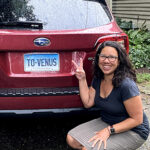
2020 – Gilmore is elected the 2020 recipient of the Geological Society of America Randolph W. “Bill” and Cecile T. Bromery Award for the Minorities.
2021 – Two Venus missions Gilmore co-developed, DAVINCI and VERITAS, are chosen by NASA for funding. They will launch in 2028 to 2030.

